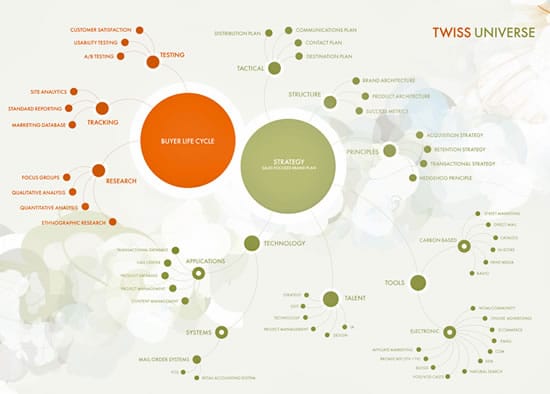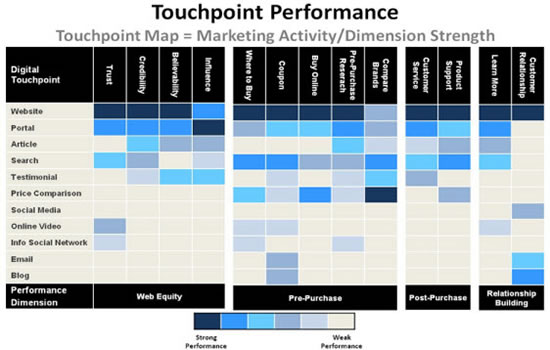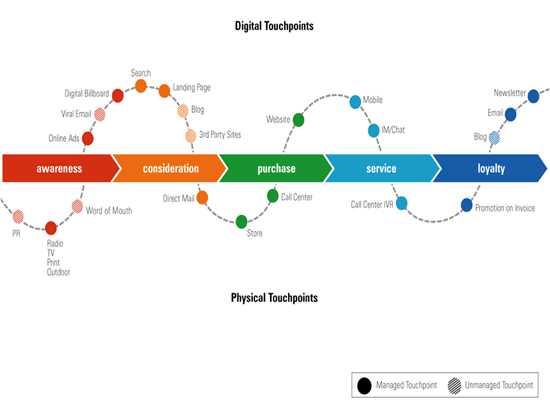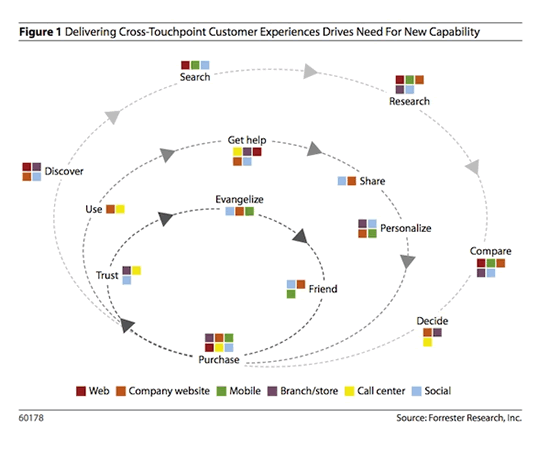Most marketers are starting to integrate their marketing channels and marketing automation is clearly taking the lead regarding the technology. Better late than never. Now get rid of the binary distinction between digital and ‘offline’ and talk about marketing again.

Let’s call it integrated marketing for now, or fusion marketing, a term we ‘invented’ for our Fusion Marketing Experience events. It doesn’t matter how it’s called. What’s for sure is that simple integration will not be enough. While in omnichannel marketing the focus is still often on the channels, touchpoint-based marketing provides alternatives that revolve around individual customer and prospect touchpoints. You have to get close and personal.
A nice depiction of the typical omnichannel, in this case multi-channel marketing approach, is the graphic above by Twiss that takes into account buyer life cycle, strategy, tactics, marketing goals and more without emphasizing the channels too much.
When it boils down to touchpoint marketing, we see three kinds of models, depending on the approach. Touchpoint marketing looks at different touchpoints, visible and invisible, between a brand and a customer in different phases and maps media, needs, etc. as mentioned above.
Approach 1: the buying stage
One way to look at touchpoint marketing is based upon the typical three stages as they are most used in touchpoint marketing from the CRM perspective: pre-purchase, purchase and post-purchase. Newer models such as the one below add stages such as relationship building. Read the post on iMedia Connection by Kimberly Struyk explaining it.

Approach 2: buying funnel models
A second and similar way to look at touchpoints is according to the buying funnel with the classic cycles of awareness, consideration, purchase, service and loyalty.

Approach 3: cross-touchpoint experience models
Another way, finally, to look at touchpoint marketing processes, as defined in this Forrester Research graphic, is the customer experience. It maps different touchpoints based on the customer experiences and actions, with corresponding cycles that are more related to the marketing goals,specifically from a social and relational viewpoint. Read more about it here.

Why does all this matter? Because touchpoints and customer experiences are all that matter and every marketer will soon have to learn how to map content, KPIs, channels and much more with touchpoint scenarios whereby touchpoints are not channels but real contact moments and whereby values will be attributed to all sorts of touchpoints to make customer-centric and performance-driven decisions.
What models do you use in practice and how do you map your touchpoints?

